This 670-hp Nissan 350Z is a hair-raising hybrid
By the time Sasha Anis bought this 350Z in 2008, it was already a race car but nothing close to the 670-hp, hybrid-powered monster it is today. “Kels,” as Sasha dubbed it, previously raced with some success in the Koni Challenge Series. When Sasha set his sights on pro sports car (GT) racing, he doused the inconspicuous Z in red paint and dove head-first into several Grand-Am races that season. It was the beginning of a massive transformation that ultimately took humble Kels—and Sasha—to places few would have thought possible 15 years ago.
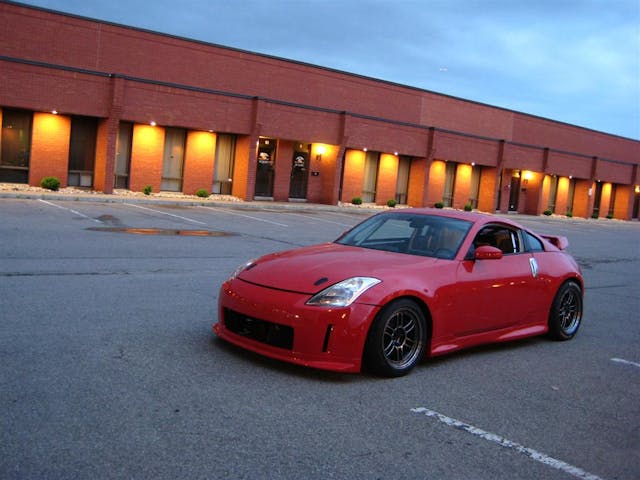
Trying to compete that first season against cars built by bigger shops, Sasha, 37, of Toronto, Canada, discovered the exorbitant expense of running a GT race car. Even more frustrating were the stifling limitations Grand-Am’s sanctioning body imposed on teams.
Sasha resorted to craftiness and ingenuity outside the rulebook, which is practically a motorsport tradition. Unknown to his competitors and scrutineers, he had surreptitiously modified the car with a customized aftermarket ECU. Inspectors were fooled by the decoy factory ECU and the phony wiring harness in their expected positions, but hidden was a MoTeC M800 ECU hiding under Kels’ dash.
Even the thrill of outfoxing Grand-Am inspectors wasn’t enough to offset the harsh economic realities of the series. However, a bitter pill goes down easier when there’s hope for a brighter tomorrow. Sasha decided to retire Kels from the pro circuit in pursuit of a more creative community.
A handful of regional sprint and endurance races followed, but along the way Sasha’s aim had changed. Once he started modifying the motor, it sparked a slew of big ideas that had been bouncing around inside his head.
The cars which inspired him most in his racing days were the mid-2000s American Le Mans Series GT2 cars. These were fairly simple cars with high-revving atmospheric motors, plenty of mechanical grip, and not nearly the same degree of aerodynamic assistance as modern GT3 cars. They were quick, though, enough to lap Mosport in 1:18.
“For me, [the appeal] was the clean shape of a GT racer, not the harsh edges and complex bodywork of a time attack car,” Sasha explains.
Committed to cubes
Partially for reasons of weight, but mainly to mimic the response and sound of GT2 cars, Sasha decided to keep the 350Z’s VQ-series engine naturally aspirated. Thanks to his burgeoning relationship with motorsport supplier and tuner Jim Wolf Technology (JWT), of California, he could benefit from the expertise and material support necessary to achieve his vision. That meant raising the rev limit to 9000, ensure proper oiling in all racing situations, and producing 400 horsepower across a reasonably broad power band.
Kels’ first iteration with JWT know-how was fun, fast, and fairly robust. As its heart was a simple VQ35DE with Grand-Am GS cams, and it made around 300 horsepower at the wheels. With some further intake development and high-compression pistons, power increased by about 45 wheel horsepower.

The next engine, installed in 2012, was based on Wolf’s developments for the IMSA GS-spec Nissan 370Z. This time, displacement increased to from 3.5 to 3.7 liters and used the VQ35HR (2006+) head. The HR head was chosen for several reasons:
- It allows for significantly better flow compared to the older DE, and it can benefit from porting. Sasha and JWT needed to lower the redline to 8200 rpm due to the extended stroke, but the top end performance was exciting.
- In the place of rocker arms, the VQ35HR has a Direct-Action Mechanical Bucket (DAMB) system. Running the DAMB system means no chance of rockers flying at 9000 rpm, which the lightweight system can achieve easily without absurdly large valve springs.
- The VQ35HR uses DLC-coated (diamond-like carbon) buckets, which allows very aggressive camshaft profiles which would otherwise destroy ordinary mechanical buckets.
This cost-effective approach yielded an engine with nearly 400 horsepower at the wheels and custom individual throttle bodies of Wolf’s own design. It was, for quite some time, almost GT3-Cup-car quick.
In 2017, after several years of successful club racing with this engine, Kels suffered a failed factory connecting rod and subsequent perforated block. Somehow, even after the engine poked a hole in itself, it continued idling and maintained oil pressure. Once shut off, though, it did not start again.
The failure encouraged Sasha and JWT to put a new plan into action for Kels. They had an idea for a 450-horsepower motor using a crank with a much longer stroke, which would bump displacement another half-lifter, to 4.2 liters, as well as an aggressive head and camshaft design.
The crew completed their first iteration of the hot-rodded V-6 in 2018. It was impressive; even with its high 14.8:1 compression and Canadian 94-octane gas supplemented with a race fuel additive, the motor would not knock.
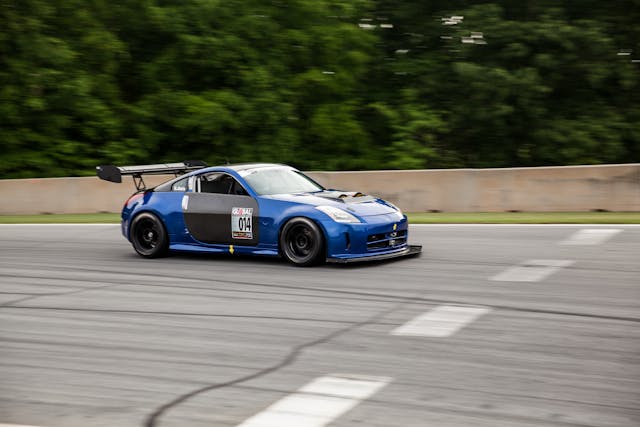
The rest of the car was relatively simple, integrating a short list of off-the-shelf parts supporting the prototype powerplant. A Quaife sequential gearbox delivered power to the wheels (shroud in 18 x 12-inch Pirelli slicks), Koni shocks supported the platform, and StopTech ST40 brakes—the same ones from those 2008 Grand-Am days—provided the stopping force. In the aero department, a flat floor and a much larger diffuser helped the car stick to the ground.
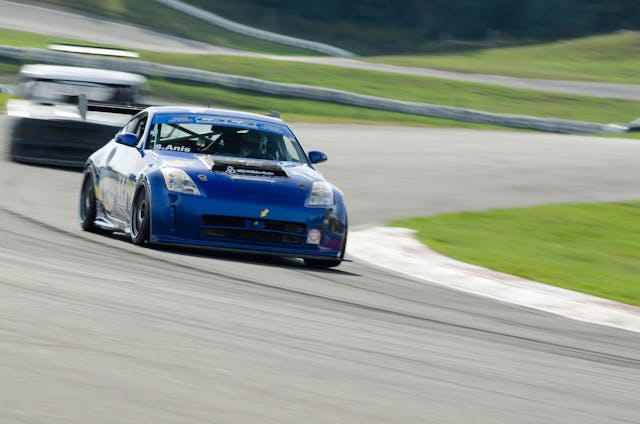
Milestone at Mosport
In the summer of 2019, Kels weighed in at 2900 pounds with driver and a full tank of fuel. Optimized for Mosport’s higher speeds and aided by good weather, the car was ready to put in a truly quick lap. When the team checked their stopwatch as Kels crossed the line, it read 1:18.159.
In a car built with JWT knowledge and no shortage of employee enthusiasm, Sasha and his closest supporters had proved with their bottle-green 350Z that, with a similar amount of power, they could nearly match the pace of a factory-built GT2 car.
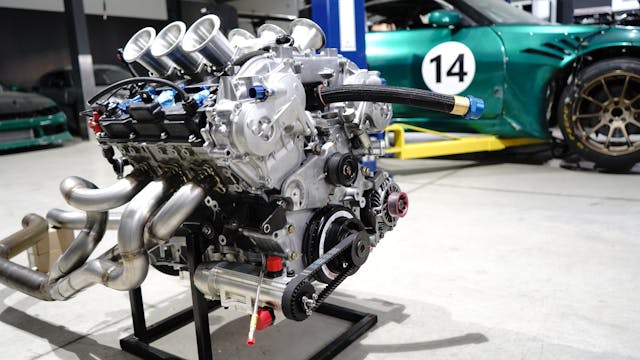
A cyborg is born
Spurred on by his recent success, Sasha returned to a couple of sketches that had been sitting on his drawing table. His experience founding Mountain Pass Performance, a tuning shop catering to Teslas and other electric vehicles that opened in 2017, gave him the confidence to implement some creative ideas about hybridizing Kels.

By the middle of 2020, he’d worked out his supplementary power source: a PhiPower e-motor (à la Formula E) stuck between the combustion engine and a magnesium-cased Xtrac 427 gearbox. With six battery modules from a BMW i8 mounted behind the driver’s seat and an inverter from Cascadia Motion in place of the passenger seat, Kels had his hot-rod hybrid 350Z.
The electrified powertrain promised 200 horsepower at the cost of an additional 200 pounds. The weight was a real setback, but the potential of the hybrid powertrain made the compromise worth it to Sasha. On top of that, the innovative hybrid system encouraged him to begin treating Kels like a muse for his experiments with even more inspiring tech.
Tailor-made

Sasha practically communes with Kels via zeroes and ones. Thanks to the capabilities of Sasha’s custom software, running on a MoTeC M150 ECU, he can easily adjust the Z’s performance.
Using a ten-position rotary knob, he can shuffle through the motor’s main modes; the “time attack” modes, for instance, dump all the electric motor’s power over a three-lap sprint, with reduced regeneration during off-throttle or braking moments to help the system delay the inevitable overheating. The most energy recuperation happens in the “charging” mode—something Sasha usually employs during cool-down laps. The third mode balances the charge for longer-term performance; it reduces power output accordingly as the battery loses its charge, and uses as much regen force as possible to recover kinetic energy.

Unfortunately, Sasha has only been able to extract 150 of the promised 200 electric horses. But the latest iteration of the VQ engine—this one with higher compression—has nonetheless brought total output to 670 horsepower.
The factor limiting the electric motor’s output is lack of voltage. In the same way a motorcycle needs a lot of revs to make power, this little Formula E motor needs a lot of voltage to make its power. “We tried three-turn windings for a little more juice, but even that wasn’t enough. We simply need more voltage,” Sasha says.

Crowning achievement
The MoTeC ECU and the associated control systems all make this type of tuning possible. While the main MoTeC software controls all engine matters, within that system Sasha has designed software from the ground up that controls everything outside of the engine. Not only does Sasha’s software manage the entire battery system, torque requests, traction control, and the paddle-shifted gearbox, it now even controls an independent four-wheel-steering system that is constantly moving based on driver inputs, speed, torque, and yaw/slip angle.
Sasha can view all pertinent data from the control unit via a MoTeC C187 dashboard display and logger. The display communicates in real time how much traction control is intervening, what the rear wheel steering system is doing, the state of the hybrid system, and even segmented inside, middle, and outside infrared temperatures of the tires. Knowledge is power, and every data point represents an opportunity for Sasha to dial in the car to his liking.
He’s also found a way to tailor the brakes to his preference. The Bosch ABS system is solid and dependable—so much so that Sasha has gotten used to leaning on it in most corners. That being the case, he made sure it would never surprise him.
“I like to have the ability in an emergency to lock all four tires. In the event of heavy braking with a lot of the sort of g-forces you see during a spin, the ABS shuts off. This is because when it’s left on, it will prevent you from locking your tires and holding your trajectory. Sometimes, it can even hook you into the wall!”
Form, function, fashion

In recent months, Sasha and his team at Mountain Pass Performance took this Nissan 350Z on a parade tour that included the Gridlife Circuit Legends event at Lime Rock Park. There, Kels rocked a Super GT-inspired front bumper for a focused, yet fashionable look.
“We didn’t want the busy front end of a time attack car with the wings and canards. We went with a GT300-inspired front end with a smooth shape to improve airflow around the front of the car. The aim is to keep air velocity high up front and pressure low behind the diffuser,” he adds.
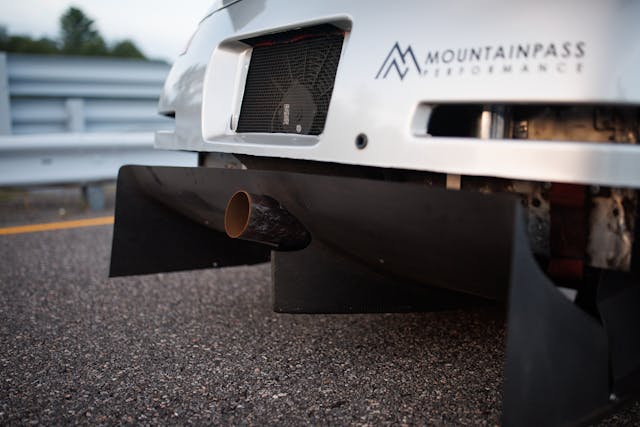
As the car currently sits, it’s nearly as wide as the trailer it rides in—roughly 79 inches—with only about half an inch of clearance on either side. That width is necessary for Kels to compete with a new class of cars. At Mosport, the current IMSA GTD cars can, in good hands, lap in the 1:16s. These machines have roughly the same horsepower and downforce as the GT1 cars from the prior ALMS era, but they now wear “customer” tires, which don’t have as much grip as those the GT1s originally used.
There are a few objectives on this year’s docket: a new custom battery, improved suspension geometry, and improved cooling.
It’s all about iteration and continual improvement, but Sasha thinks Kels might soon be near completion. “In 2009, it was just a stripped Z with an h-pattern gearbox and a little over 300 horsepower, and today it’s basically the car I dreamed of building,” he says.
Take these claims of an end in sight with a grain of salt. A constant tinkerer, Sasha sees solutions to nearly inconceivable issues within the complicated system he’s calibrated, and he’s hard-wired to make the system run as intuitively and agreeably as possible. Ideas for incremental improvements keep him up at night. We’d wager Kels still has new ground to break.
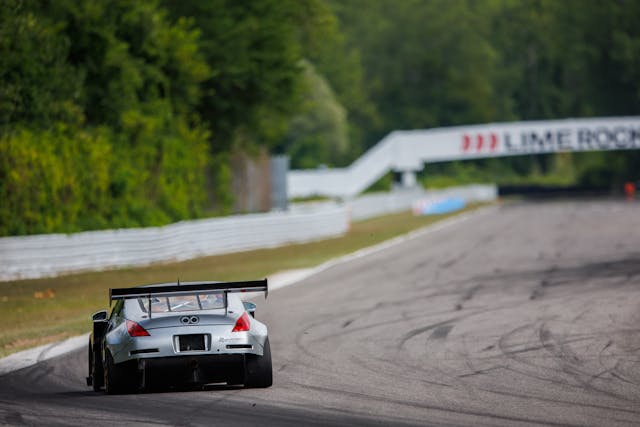
***
Check out the Hagerty Media homepage so you don’t miss a single story, or better yet, bookmark it. To get our best stories delivered right to your inbox, subscribe to our newsletters.
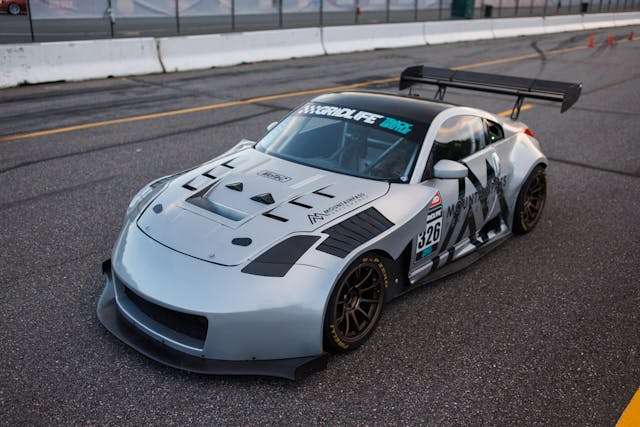
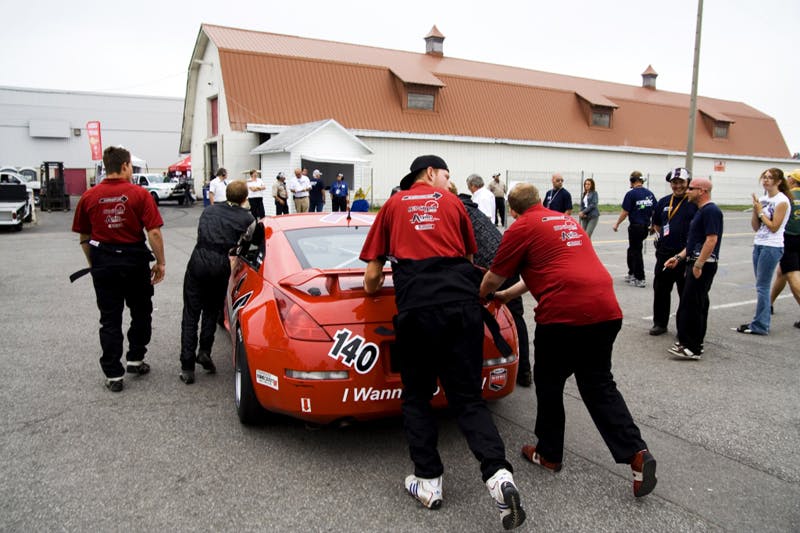

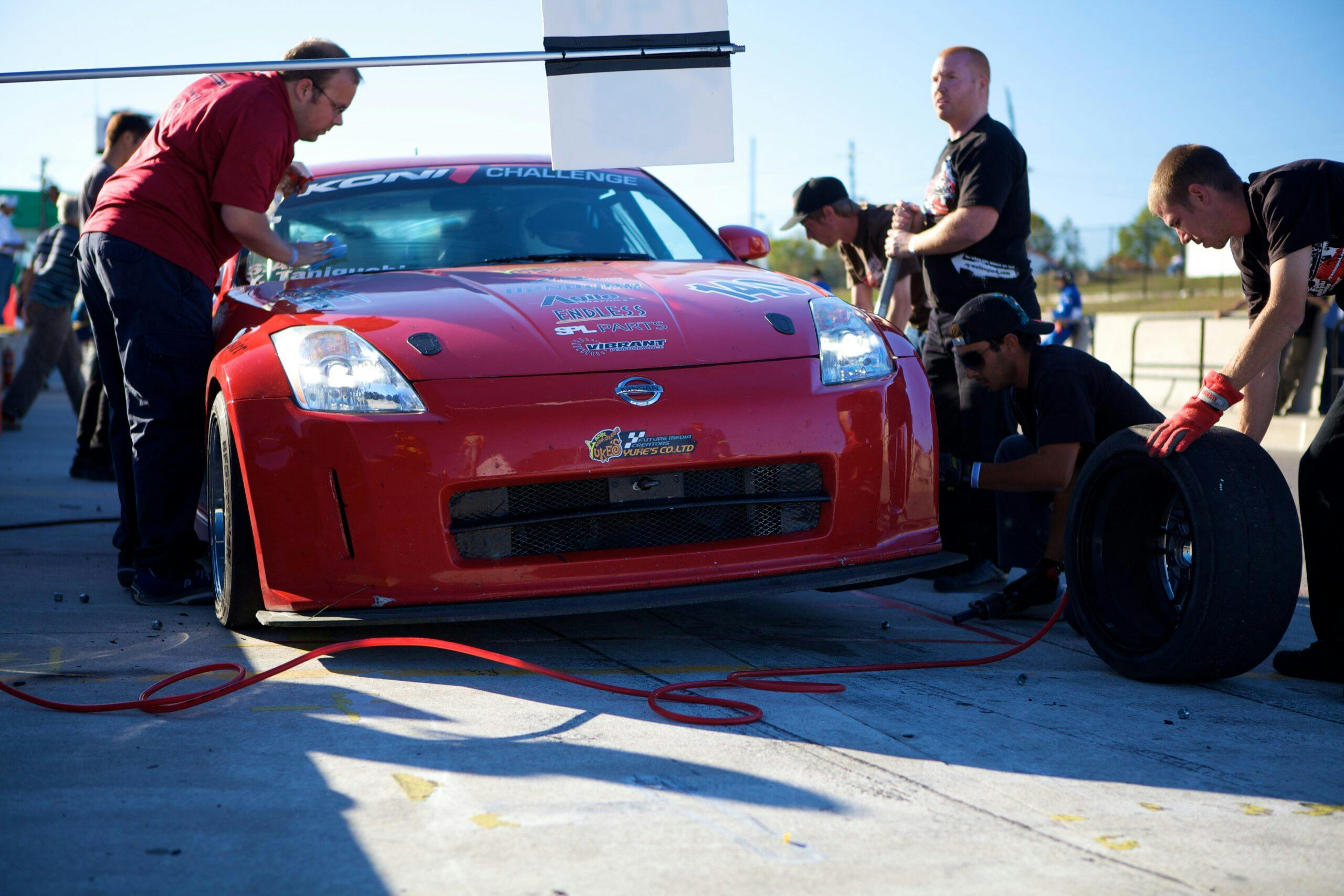


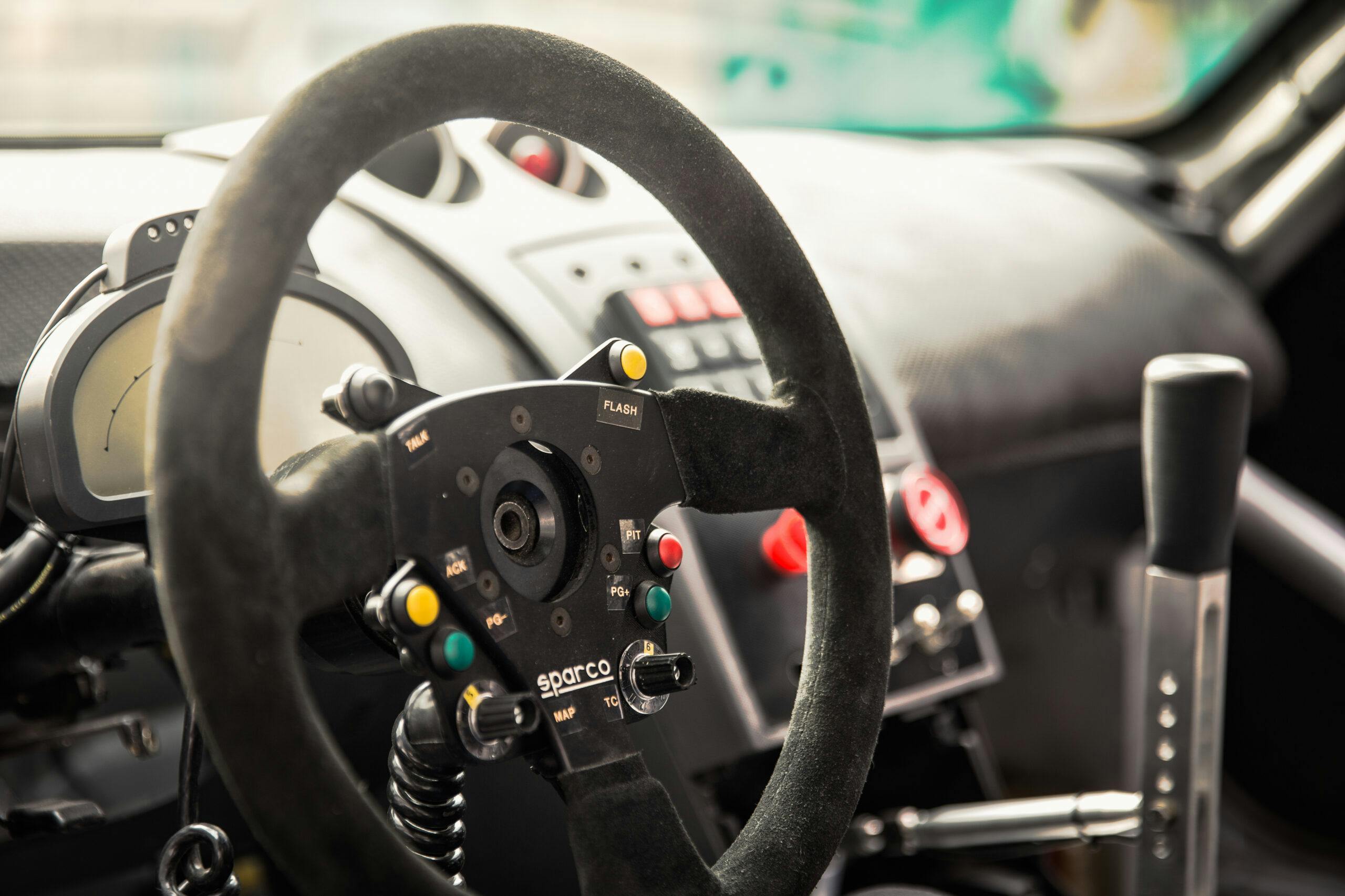
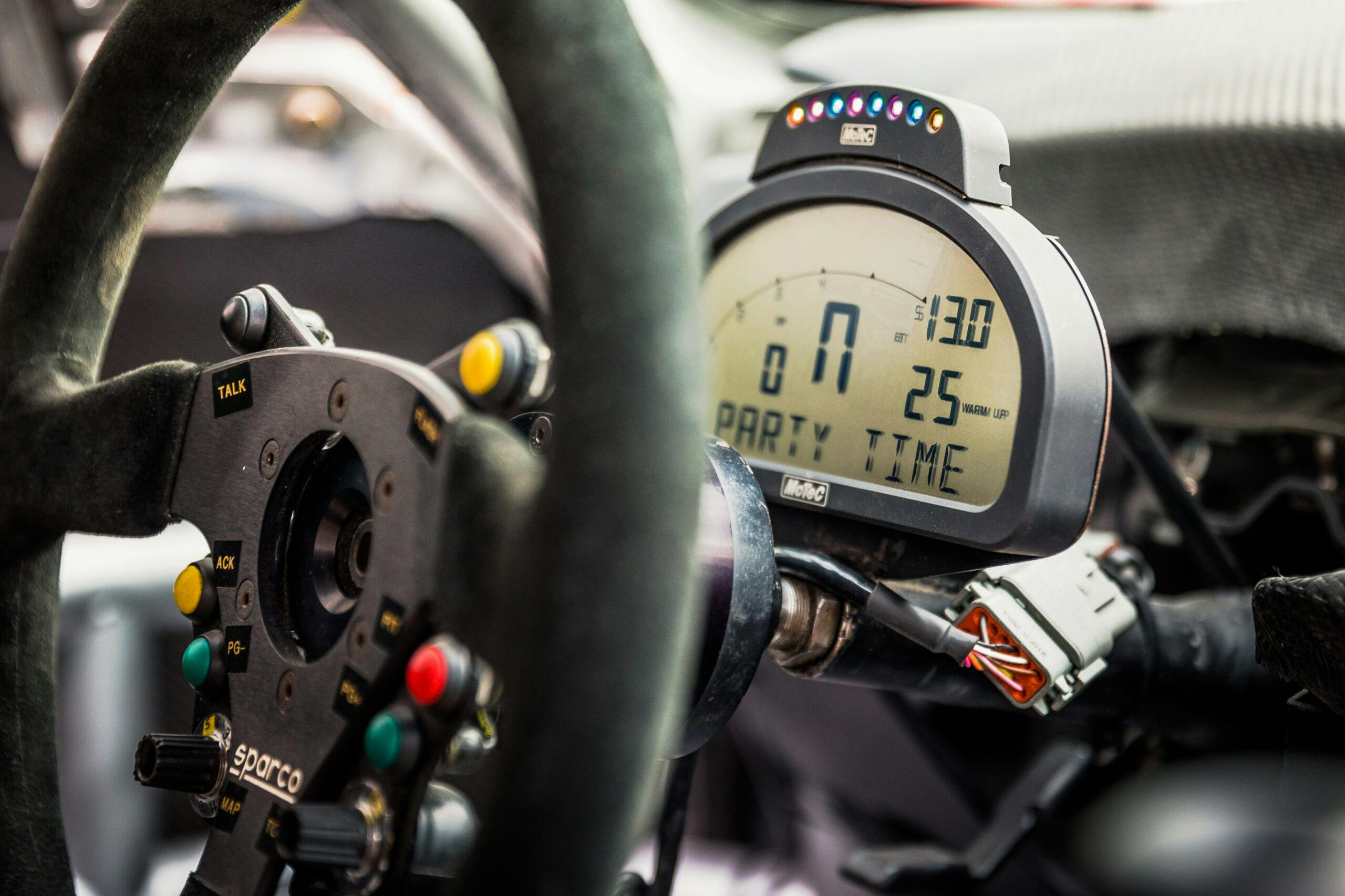
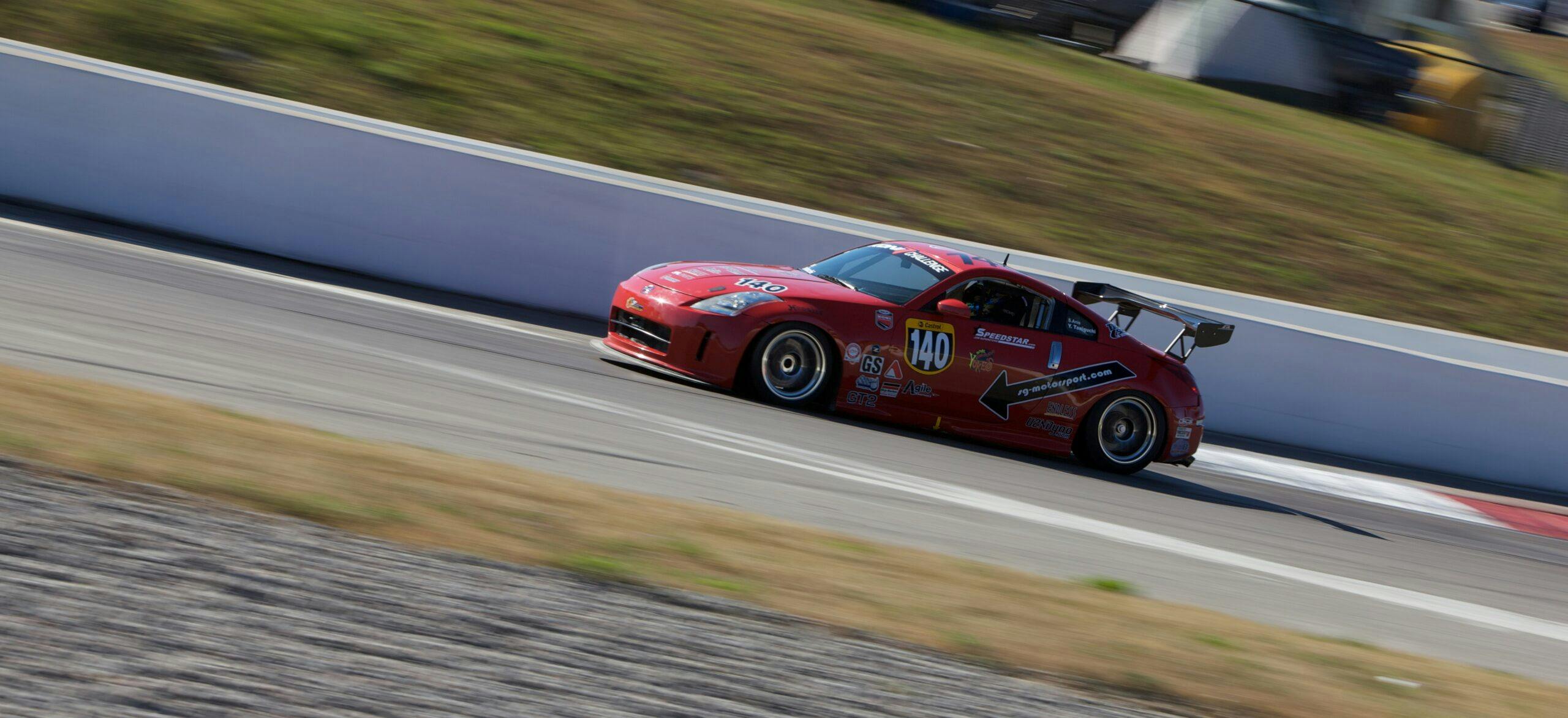

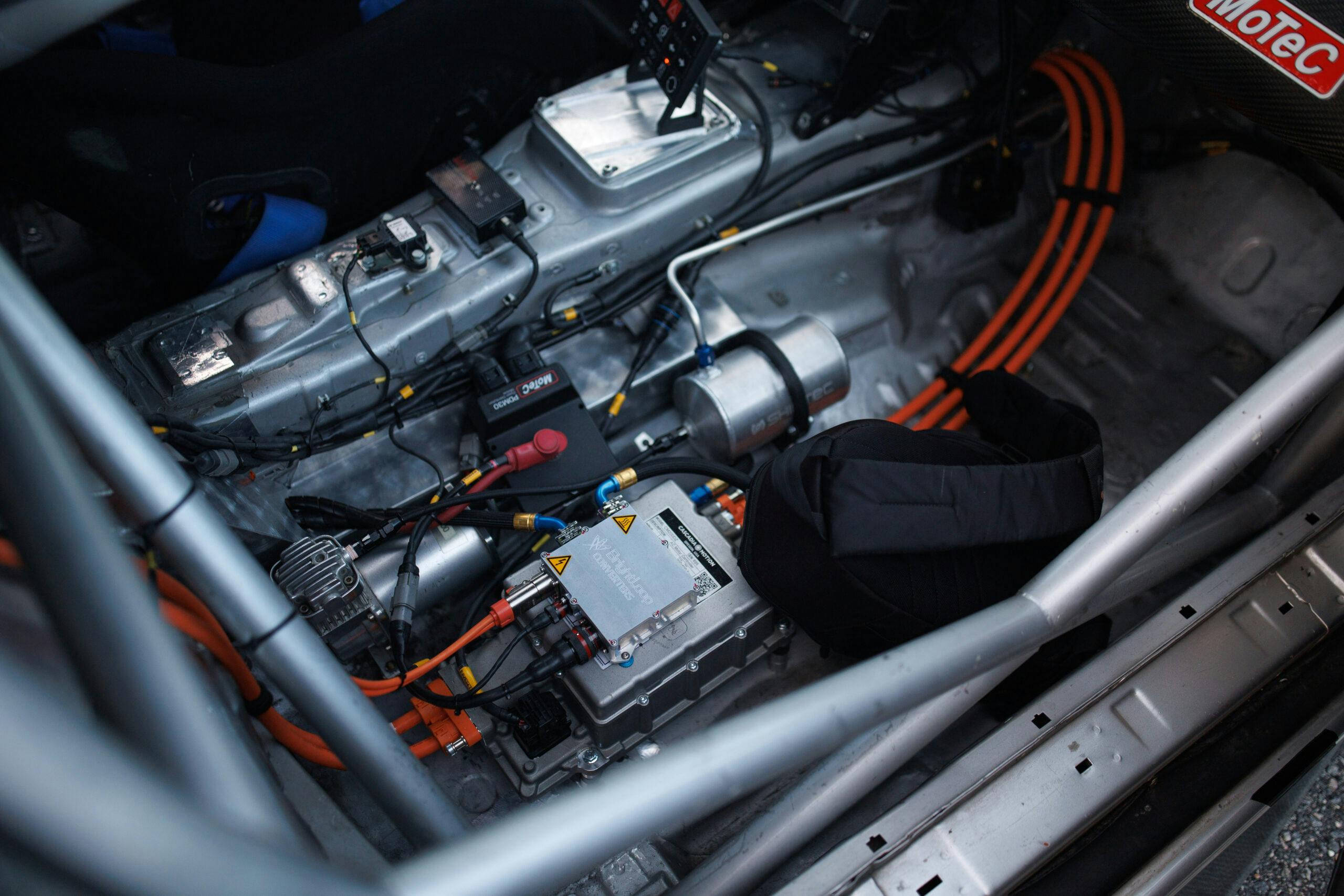

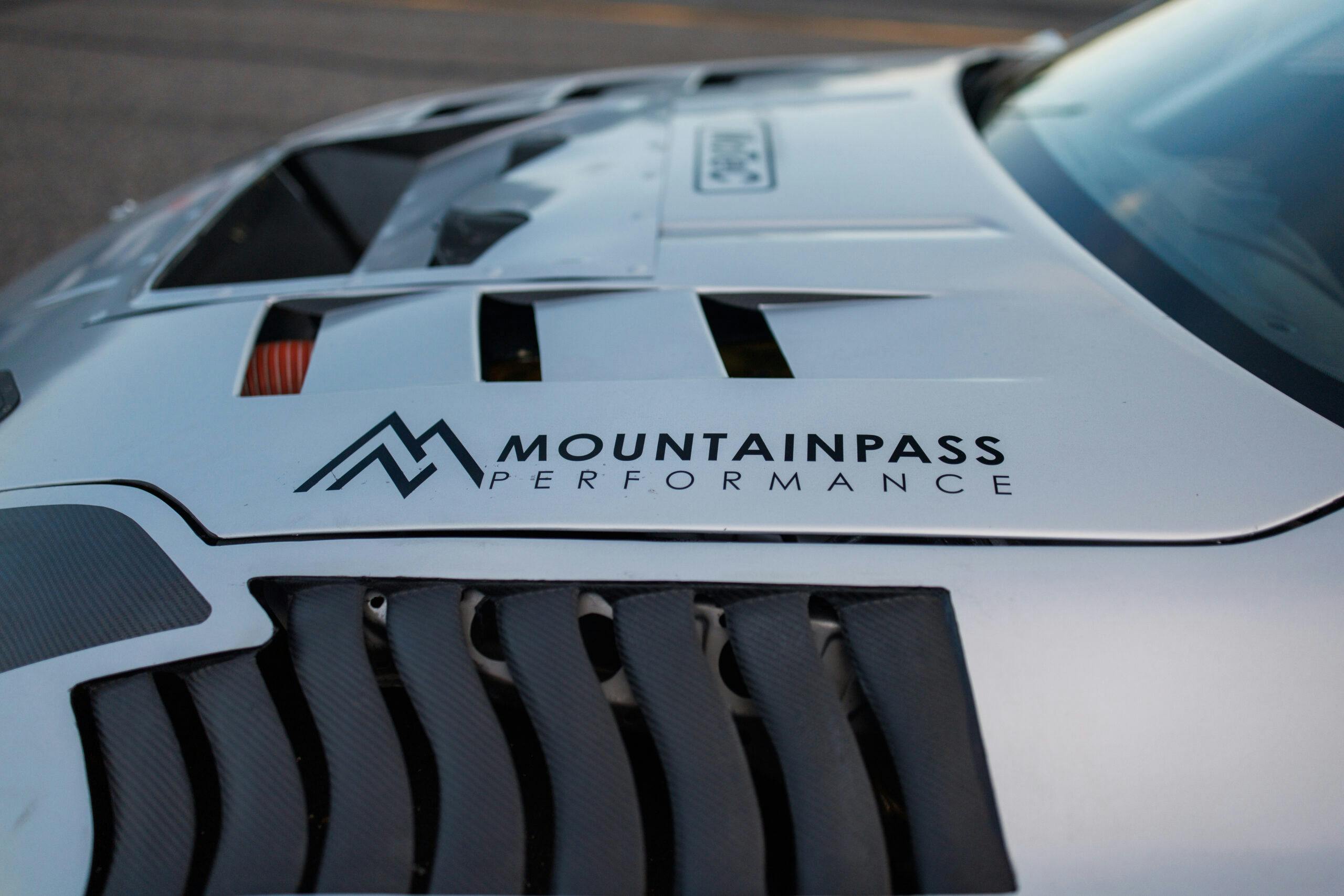
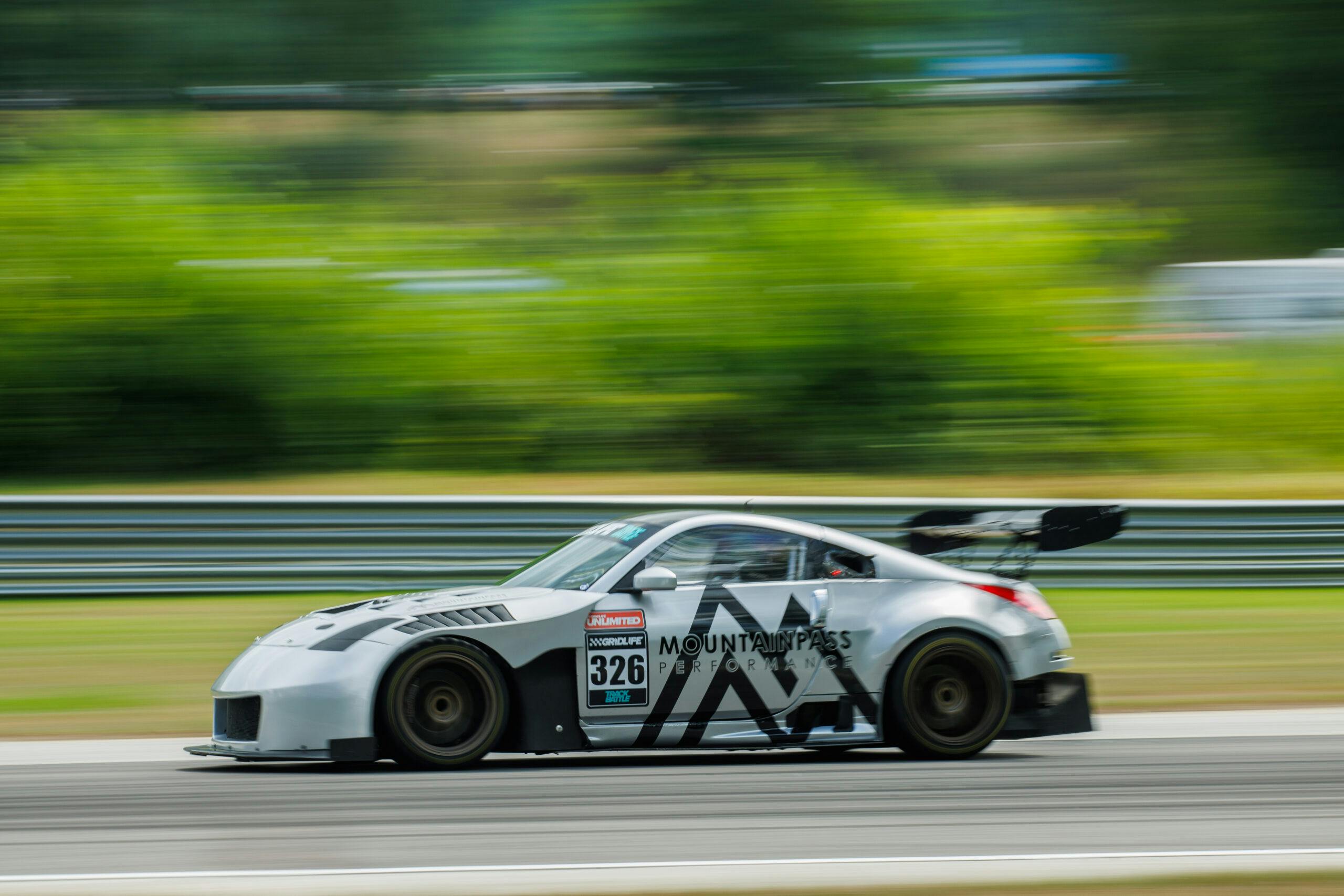

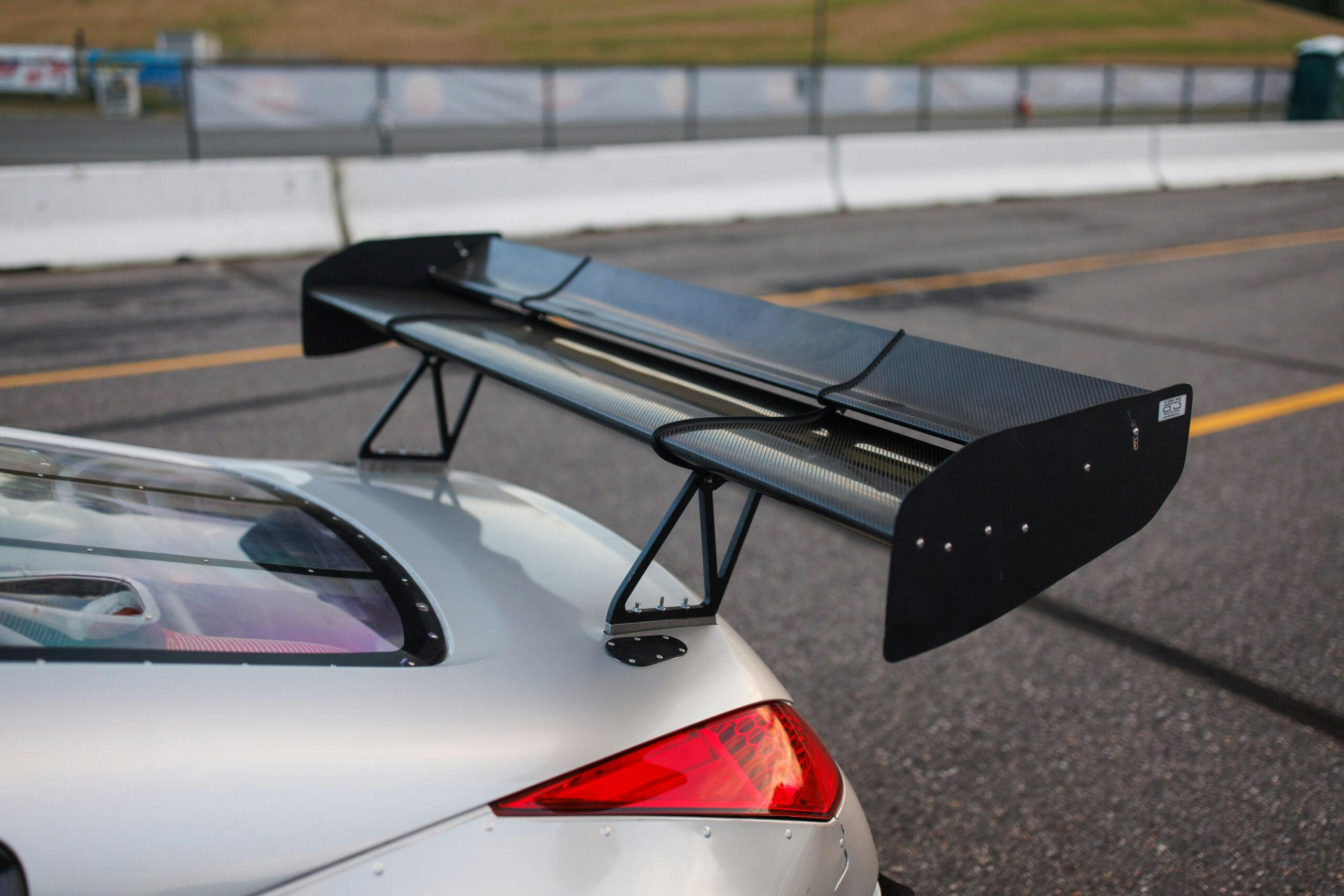


Pretty cool race car. Id be interested to see more as the quirks of the hybrid setup are worked out.